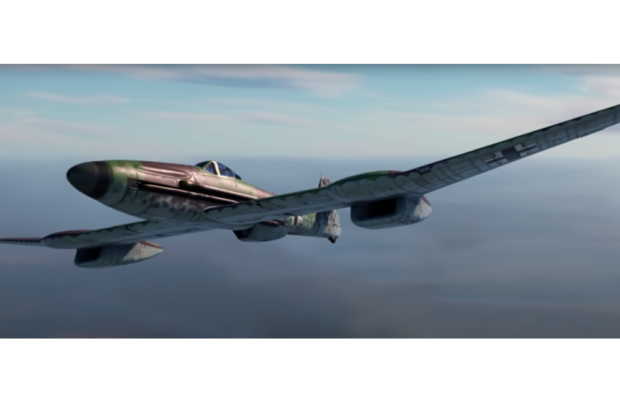The Blohm & Voss BV 155 was a German high-altitude interceptor aircraft intended to be used by the Luftwaffe against raids by USAAF Boeing B-29 Superfortresses. Work started on the design as the Messerschmitt Me 155 in 1942, but the project went through a protracted development period and change of ownership, and prototypes were still under test and development when World War II ended.
Background
Performance estimates of the American B-29 Superfortress reached German command in early 1942. The bomber would cruise at an altitude at which no current German plane could operate effectively. To intercept it, the Luftwaffe would urgently need new aircraft. Work on such a high altitude fighter was begun by Messerschmitt, but in 1943 the project was passed to Blohm & Voss. The result would be the Bv155 prototype that made its first test flight in September 1944.
BV 155
In September 1943, an order for five prototypes was placed. Blohm & Voss accepted the order only on condition they had complete design freedom and were not bound by Messerschmitt’s work to date. The redesign was named the BV 155. B&V gave it a new laminar flow wing and tail unit, landing gear from the Ju 87 and many other parts of the plane. Further wind tunnel testing showed that there was a serious problem with the overwing radiators, at high angles of attack the wing “blanked” them from the airflow and cooling would suffer. Work moved to a revised B model.
The first prototype, BV 155 V1, took off for its maiden flight on September 1, 1944. Tests with the V1 showed that the outboard radiators provided inadequate cooling, especially at high angle of attack. The intakes on the next prototype were enlarged and underslung beneath the wing rather than placed over it. However, the enlarged radiators changed the aircraft’s center of gravity which required moving the pressurized cockpit forward. The Blohm & Voss team took this opportunity to replace the original Bf 109G canopy with an aft-sliding all-round vision canopy, and the rear fuselage decking was cut down. This in turn required that a larger rudder be fitted. The ventral radiator bath was also enlarged.
With these changes, the BV 155 V2 flew on February 8, 1945. Blohm & Voss was still not satisfied with the design, and before the V2 began its flight trials they proposed that the engine be switched to the DB 603U having the larger mechanically driven supercharger of the DB 603E. The DB 603U promised a power of 1,238 kW (1,660 hp) for takeoff and 1,066 kW (1,430 hp) at 14,935 m (49,000 ft). The ventral turbosupercharger was retained. The Technische Amt decided to accept this proposal, and abandoned all work on the BV 155B in favor of the revised design, which was designated BV 155C.
The BV 155 V2 was damaged beyond repair during a bad landing. It was to be replaced in the test program by the BV 155 V3. The BV 155 V3 differed from the V2 in having the DB 603U intended for the BV 155C. However, the engine cowling and turbosupercharger were unchanged.
Various armament schemes for the BV 155B were proposed. One proposal had an engine-mounted (or Motorkanone) 30 mm (1.18 in) MK 108 cannon and two 20 mm MG 151/20 cannons. Another had a Motorkanone-mount 30 mm (1.18 in) MK 103 cannon and two wing-mounted 20 mm MG 151 cannons. Estimated maximum speed was 650 km/h (400 mph) at 12,000 m (39,370 ft) and 690 km/h (430 mph) at 15,999 m (52,490 ft). Service ceiling was to be 16,950 m (55,610 ft). Empty weight was 4,869 kg (10,734 lb). Normal loaded weight ranged from 5,126-5,488 kg (11,300-12,100 lb), depending on the armament provided.
According to the Pegasus Models Kit No. 5002 information sheet, V1 and V2 were both provided to the RAF after the war. V1 was flight-tested until it was written off. The fate of V3 is not known, except that it was left half-finished by the end of the war. V2 is in storage at the Smithsonian’s National Air And Space Museum’s storage facility.
Sources: YouTube; Wikipedia

